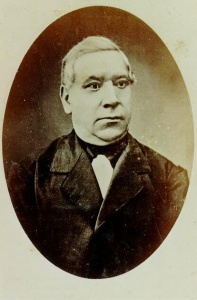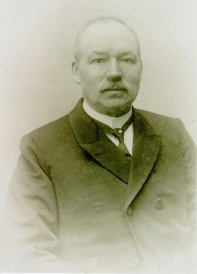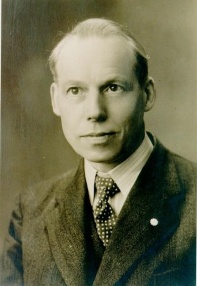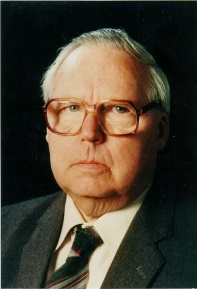Benutzer:Andriessen/en/History: Unterschied zwischen den Versionen
| Zeile 39: | Zeile 39: | ||
Zelle 7=<center>[[Bild:Andriessen Cornelis.JPG|197px]]</center>| | Zelle 7=<center>[[Bild:Andriessen Cornelis.JPG|197px]]</center>| | ||
| − | Zelle 8='''[[Andriessen, Corrnelis/ | + | Zelle 8='''[[Andriessen, Corrnelis/de|Cornelis Andriessen]] (20.4.1886 – 25.4.1982)''' |
It was quite a challenge for the young Cornelis and his brother Antoine to take over their father's company at such a young age. Admittedly, they had received a solid education at home and were good at their trade. Cornelis would take over the watch department and the optics department. Antoine was given the management of the goldsmith's shop (which can still be seen at Grote Markt 25, now a restaurant). The company was split into two separate businesses. The oldest part of the shop on Bosstraat was converted into a house for the widow, and the building on Grote Markt "St. Jacob" was expanded with the building next door "De Ketel". The old characteristic shop front was expanded entirely in style according to the original design by Architect van Genk. In [[1917/nl|1917]] the still functioning, striking outdoor clock was hung on the facade. It was ordered from the firm [[Bahnzeit]] in [[Glashütte]] near Dresden in Germany. This small town is still known today for its watchmaking industry. Jacques, Cornelis' youngest brother, but also his brother-in-law Cor. Verhagen were able to complete their education there at the [[Deutsche Uhrmacherschule Glashütte|Deutsche Uhrmacherschule]]. If circumstances prevented Cornelis from attending this famous school, his son and successor Bernard was able to do so. However, Cornelis was very gifted and a solid craftsman. The seconds regulator he built is a fine example of this. His dedication to the profession was reflected in his involvement in vocational training in the Netherlands, for many years and into old age. Many watchmakers took their exams with him. He was also known beyond the borders for his work as a board member of the Union Horlogère [[Alpina]]. He also had a special watch spring he had developed patented. His great hobby was billiards, which he often took as seriously as his profession. At the age of 80, he did not mind going on holiday to his son Piet in America. | It was quite a challenge for the young Cornelis and his brother Antoine to take over their father's company at such a young age. Admittedly, they had received a solid education at home and were good at their trade. Cornelis would take over the watch department and the optics department. Antoine was given the management of the goldsmith's shop (which can still be seen at Grote Markt 25, now a restaurant). The company was split into two separate businesses. The oldest part of the shop on Bosstraat was converted into a house for the widow, and the building on Grote Markt "St. Jacob" was expanded with the building next door "De Ketel". The old characteristic shop front was expanded entirely in style according to the original design by Architect van Genk. In [[1917/nl|1917]] the still functioning, striking outdoor clock was hung on the facade. It was ordered from the firm [[Bahnzeit]] in [[Glashütte]] near Dresden in Germany. This small town is still known today for its watchmaking industry. Jacques, Cornelis' youngest brother, but also his brother-in-law Cor. Verhagen were able to complete their education there at the [[Deutsche Uhrmacherschule Glashütte|Deutsche Uhrmacherschule]]. If circumstances prevented Cornelis from attending this famous school, his son and successor Bernard was able to do so. However, Cornelis was very gifted and a solid craftsman. The seconds regulator he built is a fine example of this. His dedication to the profession was reflected in his involvement in vocational training in the Netherlands, for many years and into old age. Many watchmakers took their exams with him. He was also known beyond the borders for his work as a board member of the Union Horlogère [[Alpina]]. He also had a special watch spring he had developed patented. His great hobby was billiards, which he often took as seriously as his profession. At the age of 80, he did not mind going on holiday to his son Piet in America. | ||
| Zeile 46: | Zeile 46: | ||
Zelle 9=<center>[[Bild:Andriessen, Bernard.jpg|197px]]</center>| | Zelle 9=<center>[[Bild:Andriessen, Bernard.jpg|197px]]</center>| | ||
| − | Zelle 10='''[[Andriessen, Bernard/ | + | Zelle 10='''[[Andriessen, Bernard/de|Bernard Andriessen]] (16.4.1915 – 19.9.1987)''' |
Bernard, as the eldest son, was destined to follow in his father's footsteps in the trade, so he first received his training in the parental business, before enrolling in the Deutsche Uhrmacherschule in [[1936/nl|1936]]. Here he made a micrometer, his own pocket watch and a model of a escapement, which is an enlarged model of a balance, lever (anchor in Germen an Dutch) and escapement wheel as can also be found in a watch. For his special achievements he received the [[Grossmann-Stiftung|Moritz Grossmann]] certificate. He also obtained his "Master" title in the Netherlands. For many years he was a member of the examination committee and board member of the [[Vakschool Schoonhoven/nl|Vakschool Schoonhoven]]. In addition to his watchmaker training he was very interested in electronics. The rise of radio and later television made him decide to pioneer in this direction as well. After the takeover by his son Piet in [[1979/de|1979]] these activities and also the optics were sold off. The departure of the business of Antoine and his descendants to Steenbergen gave the opportunity to sell jewelry in the business founded by Gabriël Andriessen. At the end of the 70s, he re-established ties with his fellow students from the school in Glashütte. These had been completely lost due to the war. Bernard remained active in the business until his death..| | Bernard, as the eldest son, was destined to follow in his father's footsteps in the trade, so he first received his training in the parental business, before enrolling in the Deutsche Uhrmacherschule in [[1936/nl|1936]]. Here he made a micrometer, his own pocket watch and a model of a escapement, which is an enlarged model of a balance, lever (anchor in Germen an Dutch) and escapement wheel as can also be found in a watch. For his special achievements he received the [[Grossmann-Stiftung|Moritz Grossmann]] certificate. He also obtained his "Master" title in the Netherlands. For many years he was a member of the examination committee and board member of the [[Vakschool Schoonhoven/nl|Vakschool Schoonhoven]]. In addition to his watchmaker training he was very interested in electronics. The rise of radio and later television made him decide to pioneer in this direction as well. After the takeover by his son Piet in [[1979/de|1979]] these activities and also the optics were sold off. The departure of the business of Antoine and his descendants to Steenbergen gave the opportunity to sell jewelry in the business founded by Gabriël Andriessen. At the end of the 70s, he re-established ties with his fellow students from the school in Glashütte. These had been completely lost due to the war. Bernard remained active in the business until his death..| | ||
Version vom 28. Januar 2025, 16:08 Uhr
|




